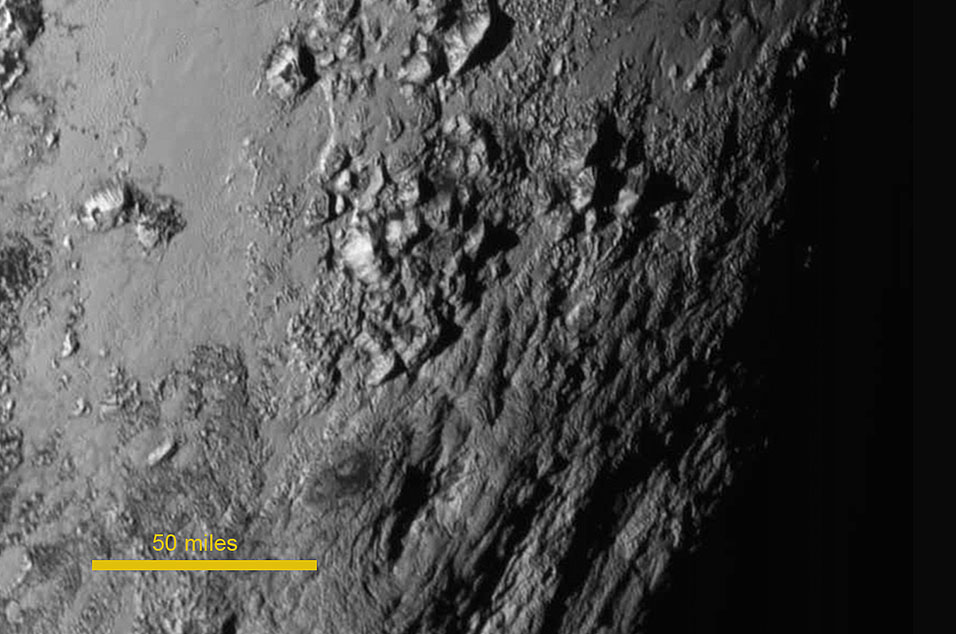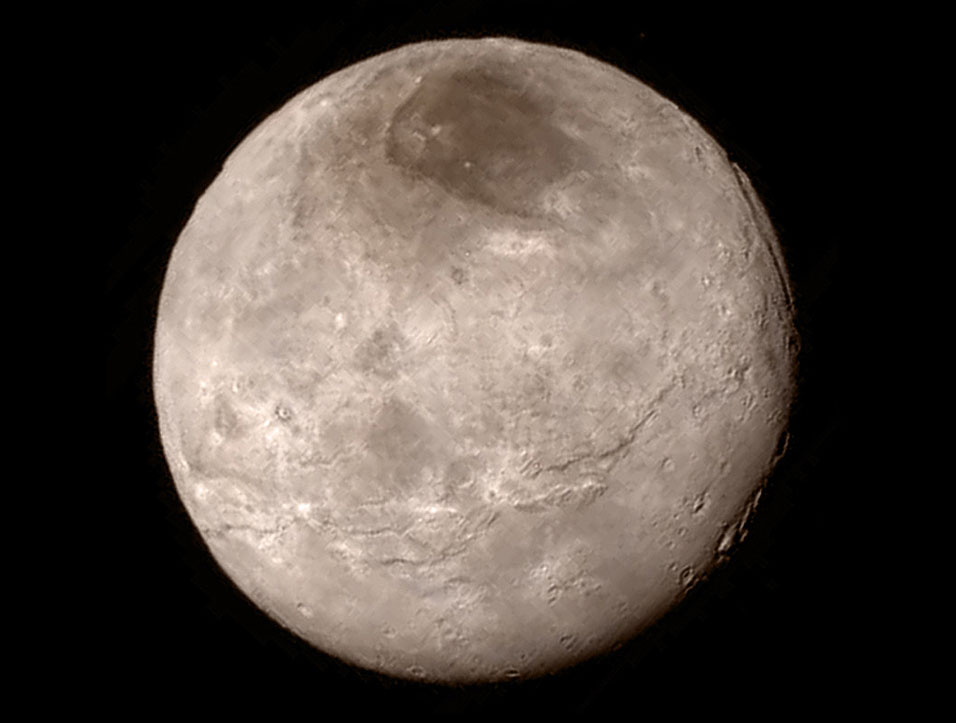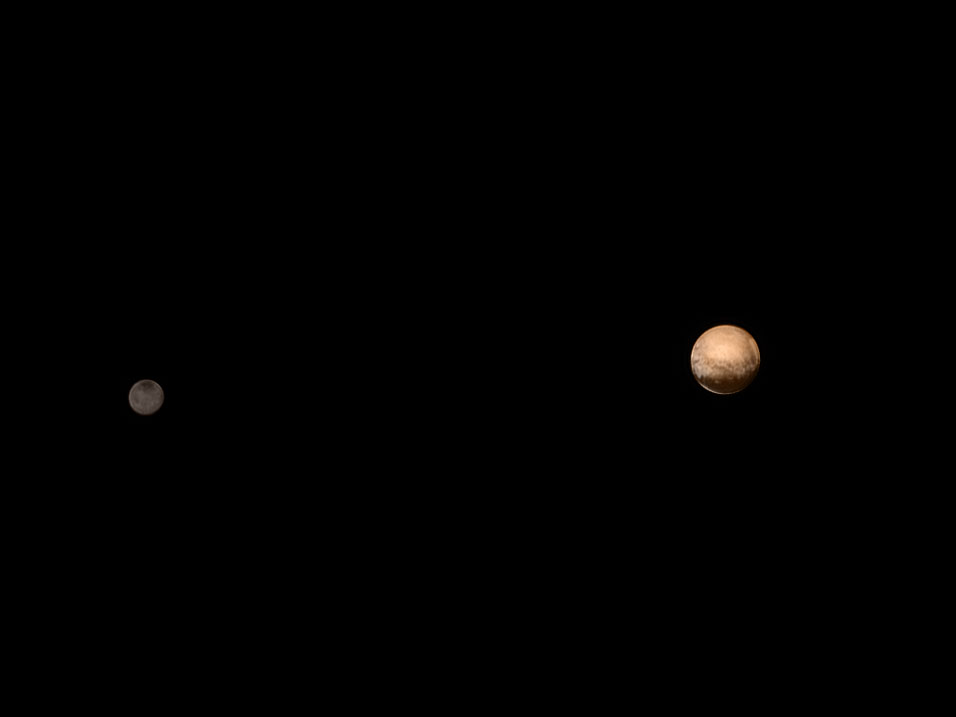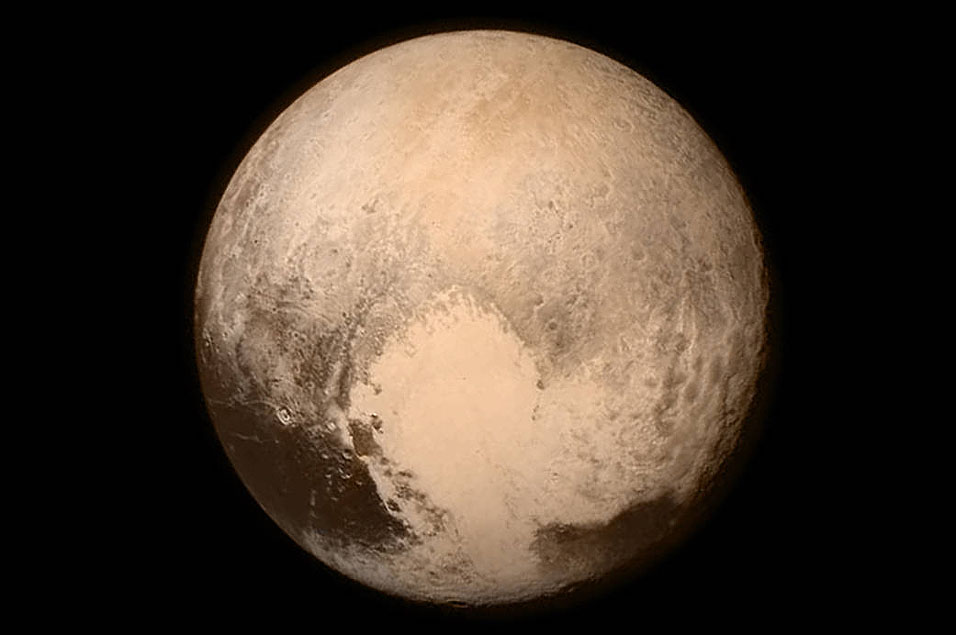Added 1 new A* page:The first detailed photos from New Horizons' historic fly-by of Pluto are in! And they went real close-up on Pluto:

image by NASA/Johns Hopkins University Applied Physics Laboratory/Southwest Research Institute (source)
The big surprise: mountains! "As high as 11,000 feet (3,500 meters)," they are almost certainly composed of water ice, which is rock-hard at Pluto's frigid temperatures (average 44 K (−229 °C)). But what caused them? It was most likely something fairly recent, as the smooth, crater-free landscape beside them could only have survived that way if it formed within the last 100 million years, hardly an eyeblink in geologic time; could Pluto be geologically active? If so, scientists will have to come up with a new mechanism to explain how this frozen little rocky ball, outside the squeezing grip of any gas giant, can move its surface around!
And we have a wide view of Pluto's largest moon, Charon (this is the compressed, slightly blurred version the probe could upload quickly; the full version will come later):

image by NASA/Johns Hopkins University Applied Physics Laboratory/Southwest Research Institute (source)
The gouge on the right side, which could be "4 to 6 miles (7 to 9 kilometers) deep," and the 1000 km (600 mile)-long scar running across the lower section, coupled with the smooth, surprisingly little-cratered landscape around them, again suggest recent geologic activity! The dark area at the north polar region appears to be "a thin deposit of dark material"—another mystery!
At about 1207 kilometers across, Charon is (just) over half the diameter of Pluto itself! So large relative to its planet is it that as it orbits, Charon pulls Pluto off its axis, so Pluto in effect orbits empty space in a small circle (although in physical reality the two orbit each other); this has lead some to call Pluto/Charon a binary system! A week before the fly-by, New Horizons captured the two in a nice side view:

image by NASA/Johns Hopkins University Applied Physics Laboratory/Southwest Research Institute (source)
(And here they are in a handy diagram showing their size relative to Earth.)
But with the relatively slow release of the final fly-by photos, the really indelible image we have so far is the one that came out a day *before* the fly-by, as New Horizons approached Pluto, and revealed the large, light "Heart" surface structure (the mountains in the top image come from the lower left tip of the "Heart"):

image by NASA/Johns Hopkins University Applied Physics Laboratory/Southwest Research Institute (source)
<3 Pluto!
|
